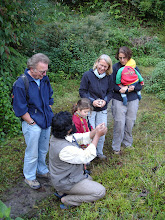The Sunderbans Inheritance. 11:44pm, 25th May, 2009The last phone was at 8:15 pm approx from Manoj at Sunderbans Jungle Camp, Bali to Asit’s mobile which said “Kaku ekhaner abasta khub kharap” (Uncle the condition here is bad). Unfortunately, the line was one way, Asit kept on shouting, tell me in details how bad, but all of us could understand that his voice was not heard on the other side.
The first phone in the morning was from Ajoyda (Ajoy Roy), the famous newsman, who warned that the weather condition was worsening in Sunderbans. He was concerned, as his love for Sunderbans takes him there almost every month. I send an sms to Asit about it and called up Shaktida (Retd. Col. Shakti Banerjee) and we decided to meet at the Help Tourism, Kalighat office in the morning.
By the time we met at about 11am, the office had turned into a co-ordinating camp office. The updates were received from the Sunderbans Jungle Camp every 10 minutes, being passed on to the various administrative quarters. The Field Director of Sunderbans Tiger Reserve, Mr.Subrat Banerjee called up Shaktida to co-ordinate army help, the same request rang from Chief Conservator of Forests, Mr.N.C. Bahuguna. The Help Tourism office suddenly became busy connecting Shaktida to the different ranks of the Army headquarters at Fort William which included the BGS, MGGS, Dy. GOC etc and also the Home Secretary, Mr.Ardhendu Sen.
Anil, the community leader for development in Bali and a poacher turned conservator with WPSI, was stranded in Canning and was sending updates from there. Mastermashai, the Chairman of our local conservation society reported in the evening that his school building was the shelter for several families in the village whose houses were gone with the wind and water. Four foreign tourists and a family of Indian tourists are caught in the Sunderbans Jungle Camp, the camp people informed that they had taken shelter in the room below the water tank, which was almost a three storied concrete structure.
The morning Bangla daily Anandabazar Patrika read, ‘destruction & rains being brought by Ayela’, a serious cyclone has hit the areas south of Calcutta (Kolkata). By the time the Sunderbans Jungle Camp was contacted, there were no boats to risk the water then. People had already taken shelter indoors. It was only day before yesterday, we (Manish, Ajoy, Bonani, Asit, Sanjib, Ranajit & I) had returned from Bali in Sunderbans after planning the rural health centre cum a mini hospital. This was after ACT (Association for Conservation & Tourism), a non-profit NGO supported by Help Tourism had already conducted more than a hundred health camps at Bali and decided that the solution is in a permanent infrastructure. It was several years ago, when the Sunderbans Jungle Camp was established in 2003 by Help Tourism, the first drinking water tube-well hand pump was established in that part of the village. We all exclaimed that the sky was Polaroid blue like the November sky and there was no sign of monsoon. We attended the ‘pathsala’ the children school and several other community development infrastructures. The sun was high and we had to take shelter under trees and people’s houses to avoid the heat. There was no sign of rain or cyclone visible to us, but alas, just after a day inbetween, this devastating cyclone. Both Asit & I are awake at the Help Tourism, Kalighat office waiting for information and taking action accordingly in the morning. Several concerned people have called me and offered all possible support, to name a few: Asish from Chennai, Pankaj from Mumbai, Jashoda from Gangtok, Ifte from Kolkata...



